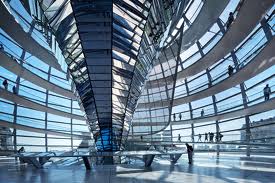Net Zero Energy Buildings: Here's How!

New high-performance buildings – and old buildings newly upgraded with energy-efficient systems – are proving that not only can they get to net zero energy – they can get there in just one year.
Of course, there is much debate on how they do it. Do buying renewable energy credits count towards achieving net zero? Does all the power generated have to be from renewable sources? What does net zero really mean?
The International Living Future Institute (ILFI) took on that question, and came up with an answer for the marketplace. In 2011, ILFI created a Net Zero Energy Building Certification, and awarded the IDeAs Z2 building in San Jose the honor of being the first building to achieve Net Zero Certification.
Energy Audits as Required
The first thing to note is that in order to receive Net Zero Certification, a building must undertake performance monitoring for a full year. This verifies that the building works just the way it says it does, all year round. This means regular, recurring energy audits to ensure that all metrics are continually met. As more buildings look to get certified as Net Zero, they will be looking for energy auditors to perform these recurring audits, stimulating new jobs for energy auditors.
Net Zero buildings must take aesthetics into consideration – buildings should be beautiful, inspirational and educational. And they also must be powered 100 percent by renewable energy.
Cheaper Options
When people think of renewable energy, they think of expensive additions like solar panels. This is where a certified energy auditor can help. There are much more passive ways to incorporate renewable energy into a building, like natural ventilation, which not only reduces energy use but also increases the comfort of those in the space. Something as simple as keeping the windows open can save energy on both heating and cooling, make the space more comfortable for occupants, and keep them engaged in energy-efficiency efforts.
Using windows and skylights, building occupants can use daylight instead of turning on lights in the building. This is another low-cost, people-pleasing way to move the building towards net zero energy.
The Packard Foundation – another company with Net Zero Certification – uses chilled beams for heating and cooling. While chilled beams are not something many people know about, they are in fact very simple, and as education spreads, more and more people will use these simple and effective beams in their green buildings.
Get People Involved
Occupant awareness and involvement is one of the most important things to focus on when “greening” a building. When people are involved in the process, and feel like they own a part of it, they are more engaged, and more likely to help see it through and help it come to life.
These strategies can help a building not just get to net zero energy – but get there fast!

